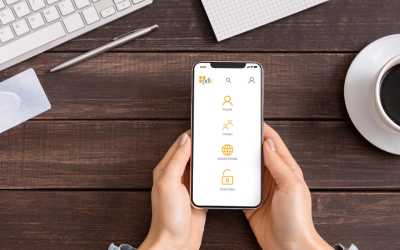Ever wanted to streamline your company’s security with something less touchy? Touchless access control systems are revolutionizing how businesses handle entry and security. These systems eliminate the need for traditional keys or cards, allowing for quick, secure access with just a simple scan.
These systems also promote cleanliness by reducing the need to touch surfaces, which is a big plus for hygiene. They’re a practical, clean solution that fits well in any modern business environment, keeping both doors and opportunities open safely. Let’s take a closer look at how these systems work and why they’re the ideal choice for your security needs.
What Is a Touchless Access Control System?
A touchless access control system manages who can enter different areas of a site. It uses methods like face or iris recognition, motion detection, or mobile device verification through NFC or QR codes. Touchless access control systems are more efficient than older methods such as fingerprint scans or punch clocks, which require physical contact and can be slower to process.
What Features Should a Touchless Access Control System Have?
Touchless access control systems have several essential components that streamline security and access management. Here’s a look at the main ones:
1. Touchless Authentication
Touchless authentication lets you access doors without having to touch things like pin pads or card readers. This system uses wireless key card readers that work with RFID technology, which means you just need to be close to the reader. The best part? You don’t have to worry about losing cards or the hassle of handing out new ones, which can save a lot of time and money.
2. Wireless Credential and Wireless Credential Reader
Wireless credentials like key fobs, smartphone-based QR codes, or facial recognition allow for entry without touching any device. This feature is crucial as it avoids the need to interact with commonly touched surfaces, making accessing the building cleaner and more seamless.
Depending on the type of wireless credential used, the readers differ. For key fobs, the reader might use radio signals to authenticate access, while facial recognition systems will use a camera setup. These readers ensure that the credentials are processed wirelessly, allowing for a smooth and contact-free entry.
3. Control Panel
The control panel serves as the central hub of the touchless access control system. It’s a computer that connects to the credential reader and handles the verification of each user’s credentials. Once a credential is authenticated, the control panel makes the decision to grant or deny access.
4. Automatic Door Opener
Integrating automatic door openers into your access control system can significantly enhance user experience and safety. These systems are designed to open doors automatically when a user’s access is authenticated, making them ideal for maintaining a touchless environment. Commonly used in ADA-compliant entrances, automatic door openers are becoming standard in many facilities to minimize contact and facilitate easier, barrier-free access.
5. Visitor Access Management
Enhancing visitor management is crucial. Moving away from traditional systems that require physical interaction is a big part of this change. Modern touchless visitor access management systems improve the process by allowing visitors to pre-register and receive access codes via email or text. Upon arrival, visitors complete their check-in on their personal devices, filling out necessary forms and signing NDAs electronically. This process eliminates the need for shared surfaces like tablets at check-in areas and streamlines the visitor entry, making it more secure and efficient.
6. Remote Credential Management
One of the standout features of mobile unlock systems is the ability to manage access credentials remotely. Credentials can be emailed directly to users, allowing them to unlock doors using the app on their phones. This feature is especially useful for businesses with remote or hybrid work models, as it simplifies the process of granting access without physical interactions.
7. Bluetooth and Cellular Connectivity
The mobile app enhances user convenience by utilizing Bluetooth Low Energy (BLE) technology. This allows the app to automatically unlock doors when it senses the user is nearby. Administrators have the ability to unlock doors remotely using a cellular connection from any location, providing even more flexibility.
8. Mobile Unlock System
Mobile unlock systems transform how you access buildings, using just your smartphone. With a dedicated app, opening doors becomes as simple as clicking a button. This means you no longer need to carry physical badges, nor do you need to interact with pin pads or card readers.
9. Cloud-Based Access Control
Cloud-based access control systems provide robust management capabilities from anywhere, without the need for on-site administration. These systems offer several advantages:
- Instant access modifications: Admins can grant or revoke access instantly via a cloud-based dashboard, streamlining the management process.
- Integration for automatic enrollment: Seamless integration with enterprise systems like G-Suite, Azure Active Directory, and OKTA enables automatic user enrollment and management.
- Self-service capabilities: Users can enroll themselves and manage their access details through the app, reducing administrative overhead and empowering users.
- Comprehensive management: These systems can handle access control across multiple doors and locations, making them ideal for larger organizations.
- Real-time monitoring: Administrators have access to a real-time activity feed, providing immediate insights into entry and exit activities, which enhances security and operational oversight.
Going Touchless
Touchless access control is the future of building security and convenience. We’ve walked through how systems like mobile unlocks and cloud-based management simplify entry for everyone. Investing in touchless technology means everyone from staff to visitors can enjoy smoother and safer access. So, why not embrace this advancement? Explore your options today or work with your IT managed service provider to use touchless access control in your organization.


